
This is it.






Co-Editors in Chief
Avery Nowicki (they/them)
Sara Brinkac (She :) They :) He :))
Let us sit for a moment.
Quietly, with a smile gently blooming on our lips, let us sit for a peaceful moment in time.
Together, let us enjoy our breath. Feeling the inhale through our nose fill our lungs with fresh air to energize our blood. Then, slowly, feeling the exhale, relaxing our body, releasing our stress, grounding us in our seat. Let us enjoy our breath, a smile blossoming, air filling up our body with calm and air flowing out with ease. In. Out. Calm. Ease.
This is quite nice. It feels quite nice to feel the stress of deadlines, worries of insufficiency and fear of the future evaporate from the shoulders. In. Out. Calm. Ease.
This moment is quite precious. This moment, safe in my environment, with access to food, shelter, water and human connection. What a precious moment, to be creating, imagining, and opening my heart. In. Out. Calm. Ease.
In. Out. Calm. Ease.
In. Out. Calm. Ease.
I don’t have all the answers. And I don’t need to. I don’t have all the answers. And I am accepting that there is no one answer to life. I am accepting that perfection is just a thought, not a reality. I am realizing I am enough. I am realizing life is quite wonderful when I release expectations. I am in communication, when I listen, seek to understand, and engage in the conversation with life. In communication, and not forcing what I believe is right, I become free. In. Out. Spacious. Free.
Like my out breath my convictions begin to evaporate. I feel mistakes, failures, rejections, fears exist in my body and bring

pain. But I realize they do not control me. They do not control my perception of me. They do not form my communication with reality. They are realities I can tend to, learn from and treat with care. I can do this joyfully because I realize they do not define me. In. Out. Spacious. Free.
I am my own person. I am my own person. I am my own person navigating the mystery of life. I care for my heart and seek to understand. I understand my being is reliant on the existence of all other life. If I were to remove one speck of dust from existence, all of life would collapse on itself. Everything that exists is an expression of life, I am part of that expression. In. Out. Spacious. Free.
There is no such thing as a “me” separate from others in reality. We have determined and categorized inside and outside, you and me. But these only help us in day to day life not in understanding our connection. These concepts do not assist in our deep communication with life. In. Out. Spacious. Free.
I am free when I release notions of a separate self. I am free when I recognize perfection is not an objective reality. I am free when I smile. I am free when I sit. I am free when I breath. In. Out. This is it.
It has been a joy growing with the Capilano Courier this year. I give all my love to those who I exist with and all my gratitude to those who came before me. May my moment in time be one of growing love and happiness. May the Courier continue to cultivate community, discovery and love for life.
Thank you for this happy moment.
With open hands, and a lotus heart.
Sara Brinkac Co-EIC

Business Manager
Prem Monpara business @capilanocourier.com

Social Media Manager
Glitter Esquivias socialmedia @capilanocourier.com


Video Production Manager
Laura Morales videoproduction @capilanocourier.com

Zine Manager
Mia Lancaster zinemanager @capilanocourier.com


Production Manager Andy Poystila production @capilanocourier.com

News Editor & Beat Reporter Yasmine Modaresi newseditor @capilanocourier.com


Art Director
Angelica Blanch design @capilanocourier.com

Sports Editor
Lea Krusemeyer sports @capilanocourier.com


Humour Editor
Adam Wallace humour @capilanocourier.com

Crew Writer
Kate Henderson crewwriterkate @capilanocourier.com

Crew Illustrator
Cameron Skorulski crewillustrator @capilanocourier.com

Videographer
Lucas Isidoro videographerlucas @capilanocourier.com

Crew Writer
Lily Rosen crewwriterlily @capilanocourier.com

Crew Photographer
Sophie Serendip crewphotographer @capilanocourier.com
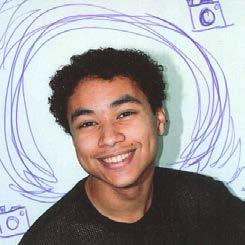
Videographer Christien Di Angello videographerchristien @capilanocourier.com

Crew Writer
Sean Finan crewwritersean @capilanocourier.com

Advising Manager
Freya Emery

Videographer
Kiki Evans videographerkiki @capilanocourier.com

Crew Illustrator
Jordan Richert crewillustrator @capilanocourier.com
Luciana Mastrangelo, Maximus Wenzel, Vansh Malhotra , A.K Broznitsky, Amandeep Kaur, Francesca Gesualdi.
Illustrators
Scarlett Side, Mesh Devkota, Eugene Lee, Sophia Filsoofi, Kit Vega, Meharveen Manchanda, Sol Yoon.
Cover Art & Photo Series Sophie Serendip.
Cover Illustration Series Tin Raganit.
Featured Artwork
Meharveen Manchanda, Parnit Kaur.
Head on over to capilanocourier.com for more featured articles!
Interested in contributing?
Email editor@capilanocourier.com for potential writers, and production@capilanocourier.com for interested illustrators and/or photographers. Illustrators and Photographers are required to send a portfolio or sample(s) of work.





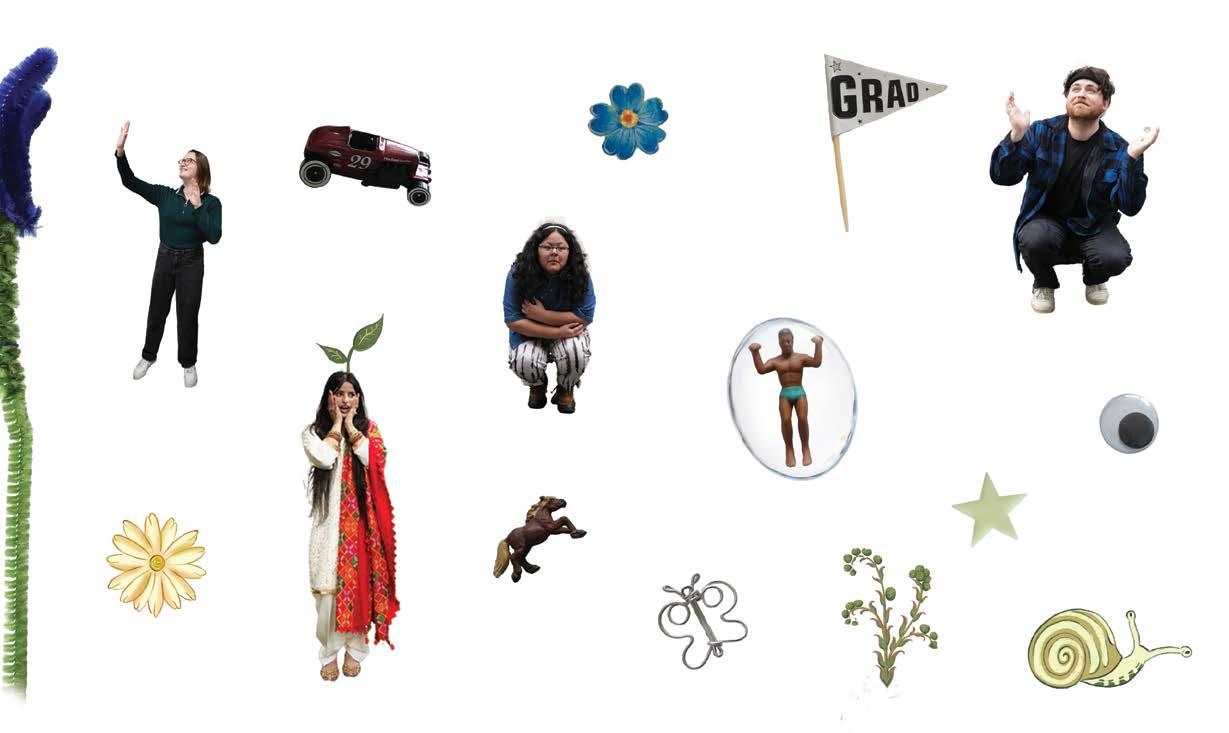

Record number of disqualifications & three directors removed from office

The trend towards greater rates of participation in CSU elections after the pandemic is interrupted, and the rise of disqualifications had the
CSU elections trends were reset after the pandemic, from having zero complaints in the three elections happening between 2020 and 2021, to having five disqualifications in Spring 2024. Now nine candidates and one non-candidate have been disqualified in the most recent election, including president Angad Brar, Vice-President Equity & Sustainability Dilkaran Singh and At-Large Representative Navjot Buttar, who were automatically removed from office as a result.
Andy Poystila (he/him)
Laura Morales (she/her) Angelica Blanch (she/her)
RCMP involved Video Production Manager Illustrators
According to Capilano Students’ Union (CSU) Bylaw XIV Section 7(c), “Any person who has been disqualified by the Elections Administrator or the Arbitration Panel by reason of election campaign misconduct,” is prohibited from accepting office, and if the person is a director, their seat is vacated.
Angad Brar was not running for any position during this election, and being the CSU president, his disqualification and resulting removal from office came as a result of substantial evidence received by Kalpna Solanki, the elections administrator. According to Solanki’s Decision 2025–26 posted on March 13, “There have been ongoing complaints pertaining to election related misconduct,” including, “encouraging slating, working as a campaign volunteer without registration, coaching students to file complaints against candidates and involvement in verbal and physical altercations.”
Brar’s involvement seems to have started after Solanki’s Decision 2025-05 on March 6, which banned Dilkaran Singh, Rahul Singh Reandi, Manrajdeep Singh, Navjot Singh, Harmol Singh, Jaskaran Singh, Arshpreet Singh and Sanchit Kwatra from campaigning due to slating activities. Respondents have 48 hours to appeal decisions from the elections administrator, and in this case Sanchit’s appeal pointed out that the ruling didn’t include the evidence available and this hindered them from properly sharing their version of events. When a complaint is sent anonymously, this limits the ability of the elections administrator to investigate it, but since the arbitration panel upheld the ban without disclosing the evidence, it must have been convincing.
Members of the sanctioned group seemed to believe that candidate Harpreet Kaur or one of her campaign volunteers was responsible for sending the evidence to the elections administrator, which would explain the harassment complaint made against Kaur on March 9 with a photo of her talking to the claimant and Brar as a witness. She successfully appealed against it by including a recording of the conversation that happened during the encounter. Solanki responded, “the warning against you
12 will be cancelled and all information related to it at the website will be removed. Many thanks for the audio clip as that may help us take action in another aspect.”
On March 10, the police were involved after Solanki posted Decision 2025-05 disqualifying Dilkaran, Rahul, Manrajdeep, Navjot, Harmol, Jaskaran, Arshpreet and Harjot Singh for slating activities. According to the report sent to the university’s Student Rights and Responsibilities Advisor, the elections administrator, the CSU executive director and the Courier by Kaur’s campaign volunteer, he was approached by Angad Brar, Gurjot Singh, Manmeet Singh and presidential candidate Manrajdeep Singh while talking on the phone. The report indicates that Brar snatched his phone and started verbally abusing him in Punjabi. One of the witnesses recorded the incident, and according to Solanki’s translation in the evidence attached to Decision 2025-26, they were trying to find out if Harpreet and her supporters were the ones who sent the evidence that got them disqualified. In addition to abusive language, Gurjot was reportedly trying to pull Kaur’s campaign volunteer into the washroom, and Manmeet intimidated another of Kaur’s supporters by saying,“I don’t care if you’re a boy or a girl.” The report included the exact time of the incident, 3:49 p.m., so that Solanki could corroborate the voice recording with the footage from the Library security camera.
At 7:00 p.m. that day, the campaign volunteer and the other supporter shared all the details of the incident with the RCMP. The officer indicated that an arrest was unlikely in this case, but he wouldn’t know for sure until he reviewed the footage from the security camera. He shared some advice for the students to stay safe until the election period is over, provided his contact information and then met with the university’s security staff.
This incident is the latest example of an ongoing problem in recent CSU elections—aggressive campaigning and candidate intimidation. The Courier reached out to former candidates who refused to participate in elections again. A former candidate for At-Large Representative shared, “They all want their people to be in power and then they divide the money; that’s why they want to make sure that there’s no opposition. I had too many no [caller] ID phone calls last time, and I didn’t want to go through that again.” Keshav Makker, former candidate for VP Equity & Sustainability, mentioned that, “People were bringing in outsiders, there were actual fights happening, and it felt like a lot of candidates didn’t even care about the position... It wasn’t about who was the best for the role anymore, just who had the biggest backing.”
Keshav also shared a very similar experience to Hargun Kaur, a former candidate for the same position, who had other candidates approaching them to assure them that they would lose, as a way of pressuring them to drop their candidacy. Manpreet Kaur, former VP External, explained how participating in the elections a second time allowed her to contrast it with the struggle of running as a new student. “Since I had been through the process before, I was able to navigate the situation professionally and report when applicable, but it is certainly intimidating for new students who rely on community support, not for votes, but other important things like navigating university, classes and friendships in a new city. This forces them to stay back from potential opportunities due to the threat of being alienated,” she said. All of these former candidates are from India, but their experience differs depending on the region they are from, as Keshav mentioned, “I’m Indian but I don’t speak Punjabi, so it felt like no matter how qualified I was, I wouldn’t get their support. It was just frustrating to see elections turn into something based on identity rather than merit.”
“It was just frustrating to see elections turn into something based on identity rather than merit.” *** ***
According to David Ennis, the CSU’s former Elections Administrator, the record number of 59 candidates during the 2024 General Elections indicated that, “the trend in recent years towards greater rates of participation in CSU elections is continuing,” considering that these numbers had been climbing from 22, 32 and 39 in the General Elections of Spring 2021, 2022 and 2023 respectively. On the other hand, voter turnout has been following a less consistent trend, going from approximately 12 per cent in 2022, 15 per cent in 2023, and 14 per cent in 2024. This year’s elections, however, showed a reduced number in both aspects/ 35 candidates and 8.6 per cent voter turnout.
The interruption on the trend of the rising number of candidates could be related to multiple instances of candidate intimidation in the previous elections, or the general decrease of student engagement with the elections and student governance. Either way, the new board has to consider when reviewing their bylaws and elections policy if they want to preserve their legitimacy as a representative student body.

14
Laura Morales (she/her)
Video Production Manager
Scarlett Side (she/her)
Illustrator
When unforeseen circumstances compromise academic success, international students cannot have Extenuating Withdrawals and maintain PGWP eligibility at the same time.
After the registration period is over and students have selected their courses, they have until the end of the Add/Drop period to switch sections, add more courses or drop a class and receive an 80% refund of their tuition fees. During Spring 2025, for example, this period started from the first day of class on January 6 until January 17. A student can still drop a course after that, until the end of the withdrawal period, which was on March 21 for the current term; they would receive no refund and have a “W” appear on their permanent record, but the course would not be included in their GPA calculation.
According to Capilano University’s registration instructions, a student cannot drop a course after the withdrawal period “unless unusual circumstances beyond the student’s control makes it impossible for them to complete their coursework and affects their academic performance.” This is called an “Extenuating Withdrawal,” and it allows students who faced personal challenges during the registered term to request a refund and have a “WE” noted in their transcript instead of a failing grade. This option is there to reassure students that the university has a mechanism to help them succeed in their studies when unexpected challenges emerge. For international students, however, this is often not an option.

Jocelyn, an international student at CapU, spent approximately six weeks recovering from catatonia caused by severe stress and sleep deprivation. She recalls feeling extremely concerned about missing classes when the medical staff refused to discharge her week after week. After enough insistence, the hospital provided a note stating that “Jocelyn was recently admitted to Lions Gate Hospital, and due to medical reasons, is unable to attend to her academic responsibilities at this time. It is kindly requested that she be granted an extension with submitting her outstanding assignments as well as taking her final exams.” The note was emailed to the university and on the same day, an academic adviser from the Registrar’s Office responded offering to help inform her instructors. The advisor also informed her about an extended deadline to finish her courses if instructors were willing to give her incomplete grades, and about the option to apply for an Extenuating Withdrawal.
Only one of three instructors agreed to give Jocelyn an incomplete grade and gave her time to complete the assignments and finish the course, but since she didn’t have the same opportunity for the other two courses, she was placed on “Academic Alert.” Jocelyn considered applying for an Extenuating Withdrawal, but she decided to meet with an immigration advisor first. In that session, the advisor explained that to maintain her eligibility for the PostGraduation Work Permit (PGWP), she needed to be a full-time student throughout her program. Jocelyn could not obtain an Extenuating Withdrawal without losing her PGWP eligibility, so the recommendation she received from the immigration advisor was to fail the courses. Lastly, the final piece of advice came from a
student support advisor regarding her academic standing—”if you re-take the courses with an F grade at a later term, then whatever new grades you received would be counted toward your GPA (rather than the F grades).”
Obtaining Canadian work experience through the PGWP is an essential part of the pathway to permanent residency for international students, and an increasing number of cases like the one shared by Jocelyn has been linked to the need to maintain eligibility for this permit in a report from the Capilano Students’ Union (CSU). According to the CSU executive director, Christopher Girodat, at the end of the fall term, “262 students were issued a required-to-withdraw (RTW) notice by the registrar’s office, meaning that those students had a CGPA of less than 1.59 and a term grade point average (TGPA) for fall term courses of less than 1.67.” Girodat pointed out that this represents a 65% increase in RTW notices compared to Fall 2023. Moreover, he shared, “Based on our discussions with the registrar’s office, we understand that the vast majority of RTW notices and appeals were with international students.” Even though the specific reasons shared by students for RTW appeals are confidential, Girodat stated that in his experience, “many of the RTWs are due to failed courses or semesters resulting from personal or family emergencies or health crises.” Extenuating Withdrawals are the only resource that CapU has to offer students whose academic success was compromised by unforeseen circumstances, but many international students cannot access this option and maintain PGWP eligibility at the same time.
15
Contributor
Illustrator
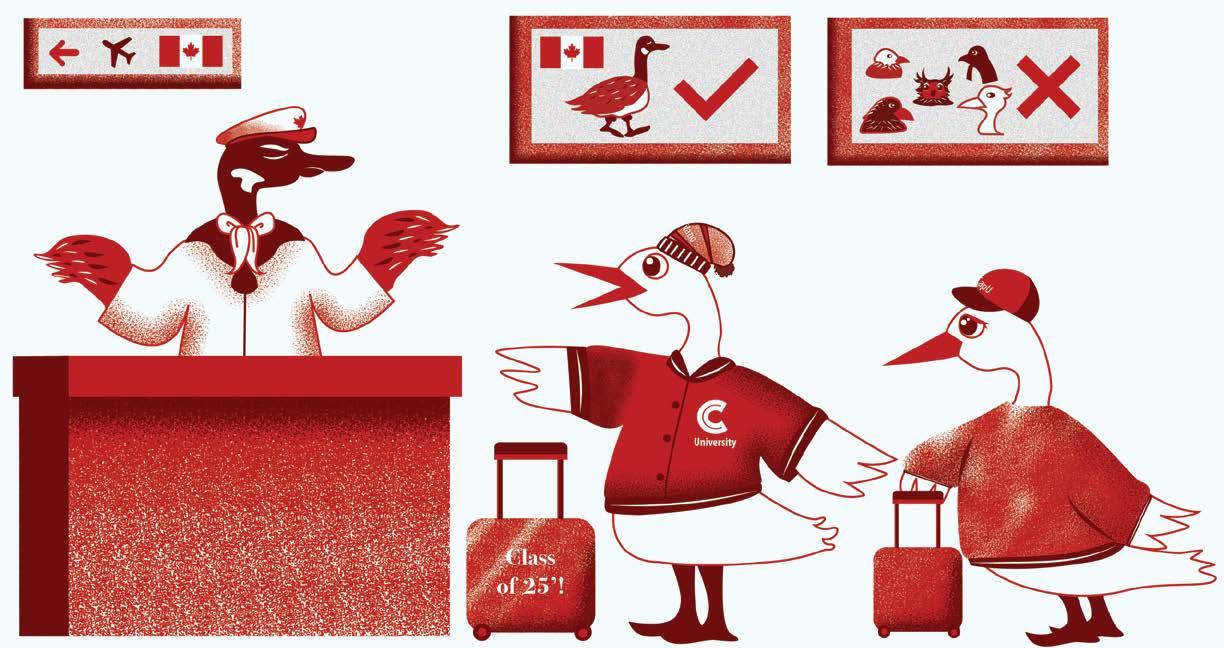
According to Statistics Canada, total police-reported hate crimes in Canada have risen from 3,612 in 2022 to 4,777 in 2023, marking a staggering 32.3% increase. This sharp rise reflects growing tensions across the country, fueled by political polarization, economic anxieties, and global conflicts. Marginalized communities, including immigrants, racial minorities and religious groups have increasingly become targets of discrimination and violence. Without stronger government intervention and public efforts, this trend could continue, further deepening social divides and making Canada a less welcoming place for those seeking refuge and opportunity.
This rise in hate crimes also highlights the ongoing issue of racial profiling and prejudice, particularly against visible minorities. Since the COVID-19 pandemic, racialized individuals—regardless of their citizenship or immigration status—have faced discrimination simply based on how they look. The surge in anti-Asian hate crimes in the wake of the pandemic is just one example of how racialized communities are unfairly blamed for crises and dismissed as outsiders.
With mounting frustrations, Trudeau’s October announcement of a 20% immigration reduction over three years signaled a shift in Canada’s approach to population growth (Hatton, 2025). “We didn’t get the balance quite right,” he admitted, acknowledging that the post-pandemic push to address labor shortages and boost population growth may have outpaced the country’s ability to provide housing and services (Hatton, 2025). During the pandemic, Canada ramped up immigration to fill workforce gaps in healthcare, construction, and essential services, but the rapid influx exacerbated the affordability crises in major cities.
Now with Trudeau’s resignation, questions remain—will this policy change be enough? And with Trump’s return to power and rising anti-immigrant rhetoric in the U.S., could similar sentiments seep into Canada? Only time will tell as Canada navigates this challenging shift.
Additionally, Trump’s second term has poured oil on an already inflamed issue in Canada regarding immigration. His mass deportations of undocumented migrants have reignited fears that rising anti-immigrant sentiment in the U.S. could spill further across the border, influencing Canadian policies and public attitudes.
One of the most infamous myths fueling anti-immigrant sentiment is that newcomers are responsible for economic downturns. However, the Canadian Housing Evidence Collaboration suggests a rapid population increase is not the only factor attributing to the economic crisis. Immigrants and international students contribute billions to the economy annually, filling labor shortages, paying taxes, and supporting local businesses (Government of Canada). Moreover, Canada’s housing crisis stems from decades of underinvestment in public housing and infrastructure, not an influx of immigrants (CHEC).
All these instances of negligence have not gone unnoticed by immigrant communities.Numerous forms of protest have been seen across the United States and Canada. By abstaining from school and work on February 3rd, the “Day Without Immigrants 2025” showcased the essential work done by immigrants. From healthcare to agriculture, construction to hospitality, immigrants form the backbone of many industries, and often go unnoticed without appreciation (Guides, 2025). Born in 2006, the protest has grown with frustration, as tensions between government and immigrants have dramatically increased due to numerous policy changes, specifically in the States.
At CapU, international students have expressed growing concerns about discrimination and exclusion. “There’s a shift in how people treat us,” says Riya Patel, an international student from India. “Two years ago, I felt welcomed, but now I hear comments about how we’re ‘overloading’ the city, and it makes me feel like I don’t belong.”
The fight against anti-immigrant sentiment is far from over. While policymakers continue to debate immigration targets, the reality is that immigrants remain essential to Canada’s economy and cultural fabric. The surge in hate crimes, political scapegoating, and growing anxieties among international students signal a deeper issue—one that goes beyond numbers and policies. It’s about who we are as a country and whether we will uphold our values of inclusion. As Canada stands at this crossroads, government leaders and communities in general will determine whether it remains a welcoming nation or succumbs to the rising tide of division.
Contributor
Illustrator
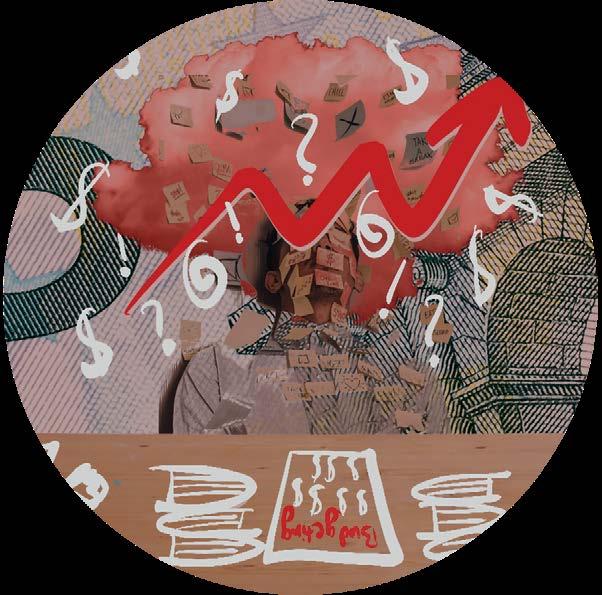
According February, University of British Columbia (UBC) student Tim Chen made headlines after sharing his commute to his university online. How could a commute to school make headlines? Well, Chen flew to his Vancouver-based university from Calgary every Tuesday and Thursday, booking round trip flights from YYC to YVR for 150$ twice a week, or $1,200 a month. While this commute may be more expensive than the average student, this was a great fiscal decision for Chen, with his only alternative being to find a one-bedroom apartment in Vancouver. The average price of a one-bedroom apartment in 2024 was about $2,500, over double what Chen paid for plane tickets. Chen’s story highlighted a growing issue in Vancouver housing discourse and inspired discussions on the future of Canadian education as a whole: How are students expected to afford education?
Before we answer the how, it helps to understand the why. While Canadian education is significantly more affordable than American education, students around the country are struggling to afford to live on their own. Yet, Canadian universities face their own challenges that have only exacerbated this issue.
Recently, Canada passed a cap on international student permit applications limiting the number of new permits to match the number of permits expiring to maintain a zero net-growth model. It enforces a 10% decrease in the number of study permits provided since 2024, or 43,000 international students to “ease the strain of housing, health care and other services,” according to an IRCC notice posted on January 24. While this limits the number of students looking for homes in densely packed cities and ideally stabilizes rent, this means losing millions of dollars in international tuition fees for universities across the nation.
Currently, many universities are opting to increase student tuition for both domestic and international students. That means even if your rent may not be rising as rapidly, your tuition will be, too. The Canadian government’s insufficient funding does not cover the higher operating costs that Canadian universities have been compensating with International tuition fees to stay afloat and allows each province to set limits for domestic tuition increase, which for domestic students is often 2%—at par with inflation, and higher for out-of-province and international students. While the province of British Columbia increased its spending on postsecondary education by 23% for the 24/25 school year, it wasn’t enough to prevent schools like UVic from cutting their budget by 13million.
Without sufficient funding from the government to support public post-secondary institutions so they aren’t incentivized to raise tuition costs or have less program options, getting a degree in Canada may not be achievable for the country’s lower to middle class. Since Gen X went to University, schools went from being an affordable risk after high school to debt magnets. During the ‘70s, federal aid failed to keep up with inflation as it had in the ‘60s, and universities instead looked to students to foot their bills.
To do this, they had to make their universities appeal to as many students as possible. While American universities have plenty of examples of this, like the lazy rivers at Louisiana State, Canadian universities aren’t above placating a “country-club-style college” to students. Universities across North America are industrializing academia. In attempts to increase student engagement, they are investing huge sums in providing recreational amenities close to campus, driving up tuition costs and increasing access to higher education based on socioeconomic status. Certain amenities have become so normalized that GenZ’s parents’ best universities would look drab in comparison. Now more than ever, universities are desperate to reach tuition quotas or risk major consequences like that of St. Lawrence College in Ontario, which cut 40% of its courses this year due to a lower international enrolment.
According to several responses from post-secondary institutions to a mandate letter from the government of BC in 2023, the solution is to update their funding formula to address higher operating costs so that post-secondary institutions are not forced to rely on international enrollment. This ranges from spreading awareness through social media to organizing events for your course/program to communicate its importance to the university. But, to minimize current economic hardship there are grants and scholarships that are run by people who empathize with students. Until there’s no sufficient funding, provincial governments may continue to leave tuition increases unregulated.
Canadian post-secondary institutions have been operating in an unsustainable way for decades, and growth has been tied to international enrollment and their unregulated tuition fees. Programs closing down, layoffs and tuition increases are immediate consequences of the cap on international student permit applications, but this cap came as a result of an unsustainable system that called for a drastic measure. Degrowth is a painful process, and there are no simple solutions for structural problems. Decision makers from all levels of government, post-secondary institutions and students will have to question what role they can play in rebuilding this system in a sustainable way.
Getting to know the man behind CapUs basketball successes
Sports Editor

For the second time in three years, Capilano University’s men’s basketball team, the Capilano Blues, have been crowned Pacific Western Athletic Association (PACWEST) men’s basketball champions—and this time, they did it in front of a roaring home crowd.
CapU, the number three seed in the PACWEST tournament, pulled off a 75–70 win over the number one seed Vancouver Island University (VIU) Mariners on March 1, 2025. The victory secured the Blues a highly competitive spot at the Canadian Collegiate Athletic Association (CCAA) National Championship.
From the first moment of the game, the atmosphere inside CapU’s Centre for Sport and Wellness was electric. The game remained a nail-biter, tied 55–55 heading into the final quarter. Two minutes into the fourth, Kash Lang drilled a crucial threepointer to give CapU a lead they never surrendered. Moments later, Ahmad Athman sank a jumper, followed by another deep three from Arshya Ghasemi, forcing VIU to call a timeout.
The Mariners fought back, with Kai Leighton hitting back-toback threes to keep the pressure on. But with just 19 seconds left, CapU’s David Featherston Jr. sealed the win with a twohanded dunk that sent the crowd full of excited Blues athletes into a frenzy. As the final buzzer sounded, students stormed the court in celebration, embracing the players who had delivered a championship on home soil.
Athman was the undeniable star of the night, finishing with 21 points, seven assists, five rebounds, and three steals. His dominant performances throughout the tournament—totalling 42 points, 11 assists and nine rebounds over the semifinals and finals—earned him both Player of the Game and tournament Most Valuable Player (MVP) honours.
The Blues’ journey to the championship was anything but easy. They eased past Douglas College 89–63 in the quarterfinals but had to go into double overtime against Camosun College in the semifinals, eventually winning 75–66 behind a 14-point, 22-rebound effort from Damein Coleman. Blues athletes Featherston Jr. and Coleman were later named to the tournament All-Star Team.
Earlier in the day, the CapU women’s team added to the school’s medal count, securing a bronze with a 64–49 victory over Douglas College. Madeleine Coffin’s stellar play earned her a spot on the tournament All-Star Team as well.
With this win, the Blues men’s team has now medaled in four consecutive PACWEST tournaments—silver in 2022, gold in 2023, bronze in 2024 and gold once again in 2025. Go Blues!
Vansh Malhotra (he/him)
Contributor
You have cut your hair
You have pulled out your beard
You have burned your moustache
No facial hair then why
Do you wear the Kara on your right hand?
Everyone wants to know if I am a Sikh as the copper bracelet thuds against the desk when I write with my right hand and then I touch Lord Krishna’s bracelet on my left hand and I stroke my hair so short that they glare at me.
Get off that Lord Krishna’s bracelet. Stop making fun of the heritage! It’s not a Buy One Get One Free offer.
The Heritage? Isn’t it my heritage too?
Either the Kara or Lord Krishna’s bracelet? Both can’t live together with one person.
India? Canada? Grandpa? Grandma? Hindu? Sikh? Both can’t exist together now. I disagree. I exist.







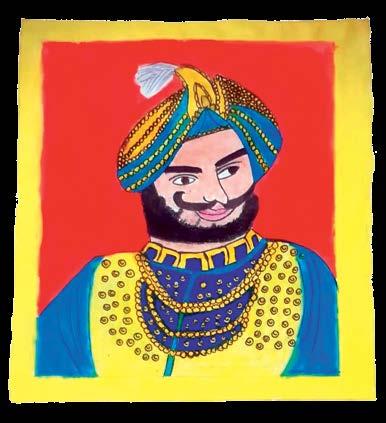
A.K Broznitsky (he/him)
Contributor
Eugene Lee (she/her)
Illustrator

He had joined the people’s army young, enlisting as soon as he turned of age. He wanted to serve his country and his leader, who he had admired ever since he was a young boy. After a year he had finished basic training and became a private. With his uniform nicely pressed, rank insignia glittering in the sunlight, he and his fellow soldiers marched a military parade, the leader watching on and the people cheering. The young soldier had been so filled with pride that day.
His assignment was at the nation’s biggest prison, a place where the most degenerate of criminals and the most dangerous of radicals were kept locked up, away from the innocent citizens of the nation. It took everything within him not to shoot them when he first saw them, those wretched creatures in their rags, hair wild, nails dirty, teeth yellow, bodies gaunt and pale. They were lower than the prisoners of war captured during the ongoing conquests. They were once citizens that had turned from their duty of upholding the nation’s values and instead had stolen, murdered and spread lies about the land of his ancestors. He practically jumped at the chance to be put into the firing squad rotation. There, alongside four of his compatriots, he served his nation, putting an end to the misery of whoever the leader or the high command deemed deserving.
Whenever a firing squad carries out its duty, of the five men assigned, one is given a blank. This is so that members of the squad can always maintain some amount of innocence, to keep their conscience clean. What the young soldier did not know is that for every execution he was present for, by some sheer luck, he had always received the blank. Some cosmic force had ordained that he, amongst the other guards of the prison, would remain innocent.
This innocence continued, unrealized by the young soldier. When the execution of the seven men and women who had stood in protest in front of a column of tanks had been televised, the young soldier’s rifle had a blank. When the leader had finally caught the mastermind behind the revolution, the rifle bucked in his hands like it had fired a real round. Even when a prison riot boiled over into a prison break, the young soldier had arrived late, and was never able to fire off a single shot.
When the frontline broke and the nation went on the defensive, his rifle remained fully loaded but never fired, resting on his shoulder as he stood watch outside the prison. When the revolutionaries and their foreign coalition allies closed in and the warden ordered the execution of the remaining prisoners, he had by chance been assigned to guard the evacuating staff, and so wasn’t present for the hasty killings. When the invading force had finally cornered the last holdouts of the people’s army, his commanding officer had ordered him and the rest of his platoon to surrender. He had handed over his rifle to the stern-faced coalition soldier, magazine full.
The prisoners, the degenerates and the thieves and the traitors, were set free. The trial of the high command began, and he watched from the television in the coalition prison camp as each and every one of them denied their actions and blamed their superiors. With a dry mouth, he and his compatriots watched in silence as a coalition report showed the leader, the man who had united the nation and forged into the greatest empire the world had ever seen, being grabbed by a screaming mob of revolutionaries and lynched. His body was dragged through the streets, down the same street that he had marched down all that time ago, with the same crowd cheering.
He, alongside a few hundred other soldiers of the people’s army, was marked as one who had committed “war crimes,” for which the punishment was death. There was no trial. In long lines they were led en masse by the revolutionaries to the same wall he had fired blanks at. He watched as each man ahead of him was led to the pockmarked surface, blindfolded, shot and dragged away. When it was his turn, nothing special occurred.
They marched him to the wall, tied a rag around his eyes, then left. He stood there, his breathing uncontrollably shallow as he hyperventilated, hearing the revolutionary captain order his men to ready their weapons, aim…
He had never fired a single shot, never really killed anyone, never really committed any of those crimes they accused him of. Surely there had been a reason to keep his hands clean? Surely whatever cosmic force had ordained him to always receive a blank would spare him, right?
The revolutionaries fired. None of their rifles contained blanks. 25

Yasmine Modaresi (she/her)
Sophia Filsoofi (she/her)
Illustrator
A unique subculture is flourishing in Vancouver, one where artists use their bodies as a medium for performative art, and bring life and laughter to the city. Nathan Monroe, a street actor who performs as a golden mechanical man throughout Downtown Vancouver and neighbouring cities, is one of these unique figures. He goes by the name Vancouver Silverman.
Monroe never expected to be doing this. “What really kinda started this was [that] I was working at a job I was tired of. I wanted something flexible, something artsy to do that I could still make some money off of,” he explained when asked how he got into his artform. Being an actor by both hobby and trade, Monroe spent his autumns working as a scare actor, but this was only a seasonal gig. Monroe wanted to continue refining his craft, learning new skills within the entertainment arts and making money doing something that he enjoyed. Almost immediately after confiding in his roommate about his desire for a creative employment adventure, “they reached out and told me they knew somebody. His name’s Josh Burns—he goes by Burns the Dragon—and you’ve probably seen him around town in Gastown.”
Shortly after reaching out to Burns the Dragon, Monroe was able to adorn himself in golden paint, prop himself up atop a small,
This is it.
portable stage and pick up shifts as a majestic living statue, travelling across Vancouver and the Tri-Cities. With the constant inflow of tourists throughout the summer season, and Vancouver’s generally diverse population, Monroe reflected during an interview that he never really had a specific demographic in mind for his performances. Rather, he wore many hats as a street performer, almost assuming the role of a behavioural scientist at times as he observed people’s behaviour from afar, recognizing patterns and curating each performance to the unique passer-by who chose to interact with him.
Monroe is a real life Non-Player Character (NPC), and he knows this, even going so far as to embrace the title. To children, he’s often an object of curiosity, and Monroe reflects that, “it’s so funny because they’re terrified but they’re also really curious at the same time. People [sometimes] think I’m a real statue and wanna come touch me and investigate. But for the most part, children like to come up and touch me […] kinda just wave at them and say, ‘Hello’ and they start screaming. Their parents love it.” Being the muse of nightmares to children that are yet to learn about the concept of personal space is certainly an aspiration for many young adults, but as previously mentioned, Monroe engages with a highly diverse demographic of Vancouverites.
While not all adults are receptive to Monroe’s attempts to provide entertainment, he has managed to be a sort of mechanical, NPC wizard to a fair share of happy-go-lucky adults, who enthusiastically accept the side quests that he bestows upon them. Over the summer of 2024, Monroe experienced varying degrees of enthusiasm. “Some people don’t even know what a ‘quest’ is. I have to explain it like a ‘magical journey,’” Monroe reflects, continuing, “[but] when I see someone excited about a quest, I know they’re a gamer.”
Golden pain, socialization and side quests— to an extrovert, being employed as a living statue may sound like the career of a fantastic utopia. But, Monroe’s days can also be filled with challenges that he’s had to overcome on his own. Physical fitness and comfort is one of those challenges, because let’s face it, being completely still and holding animated poses until some happy passer-by decides to interact with you can be tedious work. “When I’m still, I just stare at something and dissociate a little, think about my to-do list,” says Monroe, “When someone drops a tip in my bucket, I come alive like a little magical being.” He mentions trying to stay comfortable, because, “if you’re uncomfortable, you’ll be thinking, ‘Oh crap, I just want to move my legs!’” which he mentions ruins the act.
Moving forward in this growing, global tradition of street performing, Monroe expresses plans of continuing to develop his craft, acquire new skills and maybe even begin incorporating his original poetry into his performances. “This is definitely a huge thing,” Monroe says, “You see it all over the world, and it’s pretty cool to be part of something like that here in Vancouver.”
Locally, the tradition is quite young, and it continues to grow. “Josh Burns started doing this on his own around 2020, and now he’s built a whole team of statues,” says Monroe. This is a team that isn’t confined solely to a Vancouver-based audience anymore. Monroe mentions that, “Through our Instagram, people reach out to us from all over.” And he really means all over. This includes an exciting collaboration involving a YouTuber traveling to Vancouver all the way from Taiwan to film a video documenting a ‘day in the life’ of a living statue.
Once the drab Vancouver weather begins to dry up into waves of heat and smoke, locals and tourists alike can be guaranteed some engaging and interactive performances from actors like Monroe all throughout the city, so keep your eyes peeled for the dazzling NPC’s ready to give you an act or a side quest in exchange for a donation.

The power of David Ray’s philosophy of ‘rewilding filmmaking’ through micro-budget independent filmmaking in the Summer 2025 semester
Kate Henderson (she/they)
Crew Writer
Kit Vega (they/them)
Illustrator
Whether it be traveling, relaxing or getting in some extra elective credits, the end of the Spring semester only brings excitement for the summer. For some, this includes excitement for a brand new course, FILM 333, that is open to students in all faculties. Taking place in the month of June in the summer semester, FILM 333 is a three credit crash course on developing a story and creating a full-length film on minimal budget.
The inspiration for FILM 333 starts with the work of David Ray, an instructor in the School of Motion Picture Arts (MOPA). Outside of teaching Screenwriting in the MOPA program, Ray extolls the power of micro-budget filmmaking. He recently completed his own entirely improvised project, Love and Money , with a budget of $11,000. Love and Money was shot over the course of a year, a couple of days each month, entirely on an iPhone.
Ray explains that through working at, “every single budget level, writing, directing and producing the whole way through” that he has, “never had so much fun making a movie,” before Love and Money. One major aspect of Ray’s process emphasized in FILM 333 is the power of using, “your own backyard.” In a literal sense, Ray refers to the importance of understanding what physical assets are available to you to use in your own project. “Does your mother own a flower shop?” he asks as an example. That’s where one can find a story. “That’s where it becomes personal, where it becomes authentic and that’s a super powerful tool,” he says.
When Michael Thoma, Chair of the School of Motion Picture Arts at CapU, observed the process of Ray’s creation, he understood FILM 333. It doesn’t teach methods to make a cheap movie, but rather, “strip[s] filmmaking down to its absolute most fundamental components, right down to how to tell a story. That’s what’s appealing to me about this course,” Thoma says. Students taking FILM 333 will learn the basis of character and story in film.
As the chair of the MOPA program, Thoma is trying to build a catalog of summer film courses; FILM 333 can exist as the fundamentals of story in film alongside the technician-based courses related to cinematography, Lighting for Digital Imaging and Film and Grip Work for Digital Imaging and Film. Ray elaborates on Thoma’s fundamentals, sharing that his course
“It doesn’t teach methods to make a cheap movie, but rather, “strip[s] filmmaking down to its absolute most fundamental components, right down to how to tell a story. That’s what’s appealing to me about this course,”
will mean, “everyone is a creative stakeholder [...] coming in as partners with agency and respect.” Through doing this, Ray proclaims students will reach the most important part of filmmaking, “performance and story.”
On top of resourcefulness and equal contribution to creation, Ray shares his hopes that this course will, “empower people who might not think they could typically make a movie.” Ray shares further that he understands the “real history of privilege.” He says that, “with every dollar comes insecurity and power dynamics,” sharing he’s worked with, “some pretty powerful insecure people that are focussed on seeing a return on their dollar more than anything else.” Ray wants to draw focus to the stories of those who, “weren’t given a camera at eight years old.” Thoma and Ray emphasize the relevance of powerful story over dollar of independent filmmaking, referring in inspiration to the 2025 Best Picture win at the Academy Awards, Anora
Ray’s structure of creation and the structure of Anora fall under independent filmmaking, defined as “a movie that is produced outside the major film studio system,” according to StudioBinder. On top of that Anora consistent of a considerably
low budget among Oscar nominated films, approximately three per cent of its best picture competitors Dune: Part Two and Wicked . Furthermore, Baker’s first film Tangerine was entirely shot on an iPhone, just like Ray’s Love and Money . Overall, Baker idoling the workflow of Film 333, a workflow that was just honoured at the Oscars.
Ray and Thoma want to hone the power of what’s in our backyard at Capilano University, with a focus of controlling the joy of the process “With our technology today, the skies the limit,” Ray shares. Thoma follows Ray, sharing his excitement to see how this course can open “creative avenues” for storytelling students across faculties. Interested students can email film@capilanou.ca to register for an information session. “There is no pressure [on] you to be a ‘technical master,’ it’s about showing up and doing it together,” Ray explains. Most of all, Ray says he’s excited to work with students, to be, “delighted by our own processes,” and excited to see what lightning they’ll bottle together over the summer.
“Ray shares his hopes that this course will, ‘empower people who might not think they could typically make a movie.’”
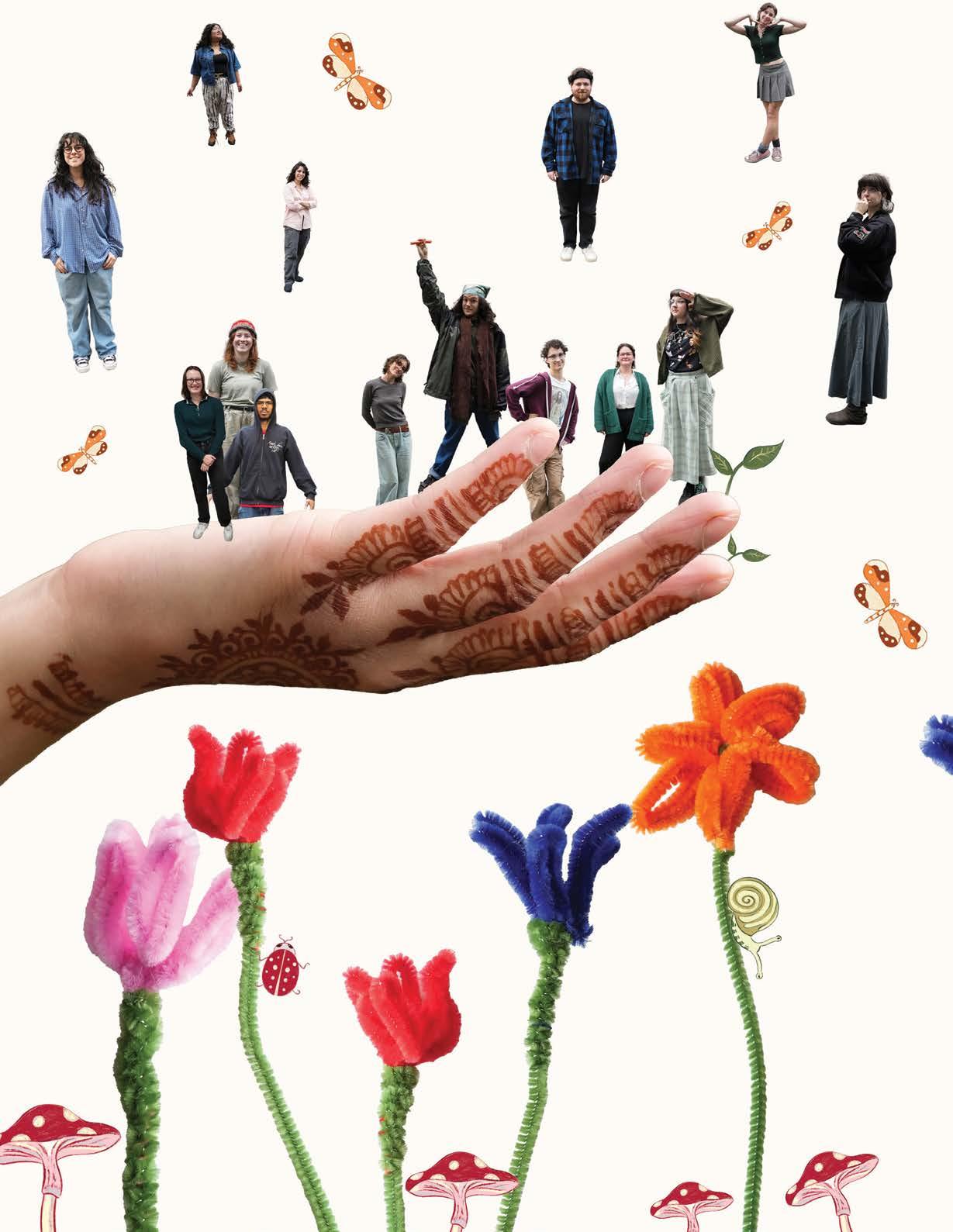



A
From Instagram comment sections to being called “foreign trash” on the street, racism against Sikhs is alive and well in the Lower Mainland. Sikhs are widely criticized for being on this land and are told to go back to India, where the political climate does not serve them, either. What goes unrecognized is that Sikhs have pioneered life in B.C., making a home for those living in the province, providing food and education and fighting for the Asian vote.
It’s believed that Sikh migration to B.C. started after British subjects from several Asian countries visited the province in 1897 and saw the immigrant settlement. The province became a migration destination for South Asians, with the first large wave of Sikh migration to B.C. in 1904. Many worked in mills, on farms or logging across the Lower Mainland.
Guru Nanak Mining and Trust was established in 1909 to acquire agricultural land that South Asians worked on. The right to citizenship—including the right to vote and own land—was given to Asians in B.C. in 1947 after years of protests, including the “No Vote, No War” campaign which pointed out that conscription was an unreasonable requirement for residents who weren’t allowed to vote.
Khalsa Diwan Society was established in 1906. Arthur Erickson— who designed famous architecture like Simon Fraser University and Robson Square—redesigned the society’s gurdwara on Marine Drive and Ross Street in 1969, replacing the gurdwara which was widely regarded as North America’s first. Khalsa Diwan Society organizes Punjabi classes within gurdwaras, computer training courses for new immigrants and puts together the Vaisakhi parade in April. They even had a part to play in the Komagata Maru incident through political and financial support.
Jasmine Garcha (she/her)
Meharveen Manchanda (she/her)
The Guru Nanak Jahaz, originally named the Komagata Maru before setting sail, was a ship carrying 376 passengers, of whom 340 were Sikh, as well as the crew who were Japanese. They arrived at Vancouver Harbour in 1914, but the Canadian government refused to let them dock due to anti-immigration regulations that required immigrant vessels to arrive in a single journey with no stops.
After two hungry months and an attack by police forces, the Guru Nanak Jahaz returned to India where the British opened fire, killing tens and imprisoning hundreds. Baba Gurdit Singh, one of the survivors who chartered the ship, went into hiding for years after this incident so that somebody would live to tell the tale.
The Canadian government has since issued apologies for this tragic incident, commemorating it at Canada Place with a memorial monument and the renaming of a street to Komagata Maru Place. The Vancouver Art Gallery also displays a figurine of the ship above one of the entrances as part of Ken Lum’s “Four Boats Stranded” installation. The Maritime Museum, despite its name and theme, has never commemorated the incident.
In 1916, the historic town of Paldi was founded on Vancouver Island. Paldi was originally named Mayo after one of the founders, Mayan Singh Manhaas, who went by Mayo because he thought that it would be easier for Westerners to pronounce. The town’s name was changed to mirror the name of the Punjabi town from which Manhaas and his family had migrated. They were businessmen, founding a lumber company that operated for many years. Manhaas donated to Indian charities, garnering the attention of the first Indian prime minister, Jawaharlal Nehru, who visited the town in 1949.
“To this day, many farmworkers in B.C. are Sikh, working to feed the population which aligns with the teachings of Sikhi’s first Guru, Sri Guru Nanak
Dev Ji, who taught, ‘Love all, feed all.’”
Paldi Gurdwara was established in 1919. After undergoing multiple renovations, it still stands in the town today under heritage site preservation. Next to the gurdwara were the bunkhouses where millworkers of majority Indian, Chinese and Japanese descent stayed with their families. The mill burned down multiple times and the safety of the immigrant workers was neglected.
Many locals from the town have since migrated into more populated areas of B.C. Although Paldi is often referred to as a ghost town, a filmmaker and Capilano University alum, Monica Cheema, insists on the contrary based on her time spent in the town to create her short film Paldi, A Place Like This.
Cheema’s film showcases the local Punjabi community working toward keeping history intact and pushing for full historical preservation to restrict development. A woman’s voice narrates, reading a letter. While an older man points at countless black and white photos on the walls, explaining who from each picture belongs to which family, the woman reads, “
। ” This roughly translates to, “Many of our stories aren’t being told. But, then you look here. They’re written all over the walls.”
In the 1970s, there was an influx of Sikh migrants working on farms in Richmond. They would start their days early, picking berries, tilling the soil and preparing the harvest. Although laws protecting labour workers had already been enacted, they didn’t apply to immigrants, who were often given lower wages and more work.
The Maan Family migrated to Abbotsford during this period. Established by Jawahar and Gurbachan Maan, the farms became famous for their berries. The empire built by Maan Farms continues to attract people from around B.C. to their autumn events including the Halloween corn maze and pumpkin patch, and year-round for various events including goat yoga.
To this day, many farmworkers in B.C. are Sikh, working to feed the population which aligns with the teachings of Sikhi’s first Guru, Sri Guru Nanak Dev Ji, who taught, “Love all, feed all.” This is the motto of Guru Nanak’s Free Kitchen, a non-profit that operates out of Surrey. Every weekend, volunteers can be found on the Downtown Eastside handing out food made at the gurdwara. Gurdwaras in B.C., as any gurdwaras, also serve food for as long as they’re open and the doors are open to all.
These are the people being told to go back to their country; the same ones who have worked to build this one and feed its people.

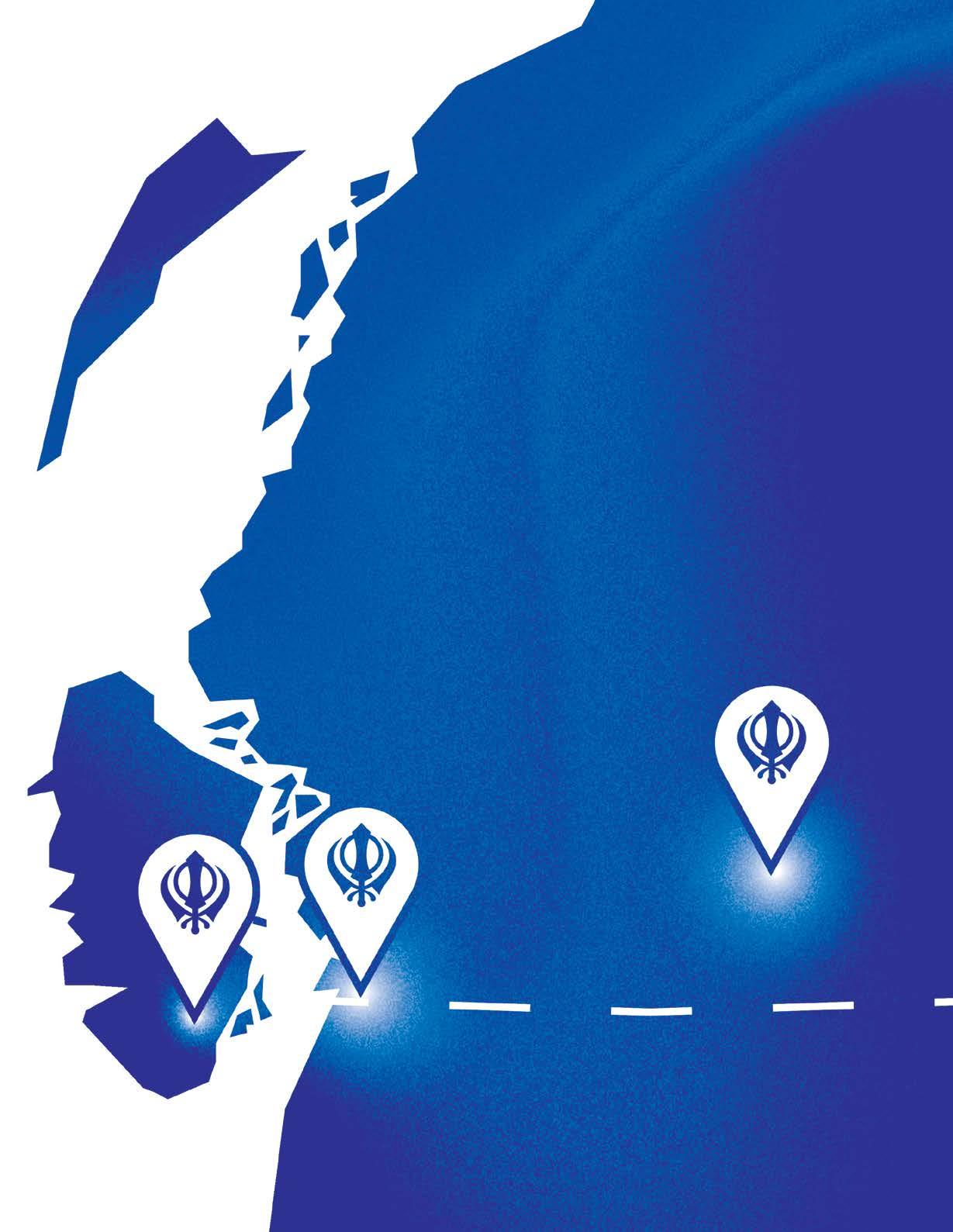
Why Guru Nanak’s Free Kitchen, a Surrey-based NPO, feeds the Downtown Eastside every weekend
Amandeep Kaur (she/her)
Contributor
Scarlett Side (she/her)
Illustrator
Guru Nanak’s Free Kitchen (GNFK) is an organization led by one of the basic principles of Sikhi, Sarbat Da Bhala (well-being of all), which encourages seva, selfless service, as a pillar of the faith. The organization’s volunteers have been serving residents from the Downtown Eastside (DTES), the most socially and economically challenged part of Vancouver and the Lower Mainland since its founding in 2006. Operating by the motto, “Love all, feed all,” they serve cooked meals for those in need. They also provide toys, clothes, free groceries and more.
Their motto is derived from the very beginnings of the Sikh faith. The Sacha Sauda story goes that Sikhi’s first guru, Guru Nanak Dev Ji, was given Rs. 20 (rupees) by his father in an attempt to interest him in trades. At this time he was 18 years of age and hadn’t expressed an interest in farming or other money-making businesses. Guru Nanak Dev Ji set off into town with this money, and he instead bought food for the fakirs (people in need) who he encountered on the way. Guru Nanak Dev Ji’s selfless act built the foundation on which Guru-ka-langar stands; every gurdwara serves food called langar , and the doors are open to all. Thus, “Love all, feed all.”
When GNFK is serving nutritious food, everyone is welcomed and treated equally regardless of their background, caste or community. When volunteers were handing out plates at the Punjab 1984 rally downtown, they even stopped passersby—who were downtown for completely unrelated reasons—offering them food. Their all-welcoming policy goes for volunteers as well. They believe that volunteer work brings countless benefits, including improving mental health through making a difference.
GNFK also organizes the Food Rescue Program, delivering thousands of pounds of food weekly to those in need around the Fraser Valley and Lower Mainland by volunteer drivers. Their website details that they provide these delivery services to shelters, church groups, food hubs, Indigenous support services and Indigenous nations.
GNFK has been assisting community shelters throughout the Lower Mainland. During the yearly events—GNFK School Supplies for Kids in Need, GNFK Valentine’s Event, etc.—numerous care packages are distributed. During the GNFK Toy Drive, more than 3,000 new toys are given to families with low income.
The second annual GNFK rice donation drive donated more than 275 ten-pound bags of rice in loving memory of some of their family members. This was possible because of the generosity of friends, family and clients, who raised $3,200.
They also provide emergency relief during disasters. In collaboration with Helicopters Without Borders and Khalsa Aid Canada, they delivered food, first aid, cleaning supplies and other necessities to B.C. residents who were stuck due to flooding in 2021. They also organized a craft day where bracelets were made and given to homeless teens who live in the Vancouver Covenant House.
Some of GNFK’s yearly events include the Mother’s Day Simran (meditation), the Valentine’s personal use items and hygiene supply drive, School Supplies for Kids in Need over the summer, the Toy Drive for Christmas and tree-planting for Gurpurab (Guru
Nanak Dev Ji’s birthday). Some of these events directly provide help to people in need, while others collect funds to improve the facilities and support more people.
As a non-profit, the organization relies on community efforts. GNFK receives donations and partnerships from corporate sponsors as well as individuals and families who can choose to volunteer, make a one-time contribution or donate monthly.
According to the organization’s Event Coordinator, Tejinder Kaur, GNFK has always been blessed with people’s contribution to make their goals true to help others. Some minor challenges that GNFK faces are logistics, getting volunteers organized, funds sorted and getting supplies and items that they need to provide to the community. She mentions that coordinating and responding in a timely manner can also be challenging sometimes. Despite the challenges, it works out in the end and pays off greatly, as helping others is a way for Sikhs to show their devotion. “Selfless service is one of the main tenants in Sikhi,” says Kaur, continuing, “As a Sikh, my volunteer work is all about giving back to the community and helping those in need.”
Coming from a Sikh family, and being a part of sangat (Sikh congregation; those who attend worship at a gurdwara) from an early age inspired Kaur to become a part of this beautiful organization.
Kaur shares, “Every contribution, no matter how small, can help create a better, more caring world.”
“‘As a Sikh, my volunteer work is all about giving back to the community and helping those in need.’”

Sloth*, professionally known as $LOTHBOI, is an artistic creator based out of Vancouver, B.C. Leading his life with the philosophy of creation for creation’s sake, he’s ventured into several avenues of creative expression. “I create to survive,” Sloth says, explaining that although some may choose to call him a musician, his career goes beyond this title and he wishes, “to create in every way possible.”
Everything Sloth creates stems from his desire to spread a message. “Even though the flesh is mundane, my path is divine,” Sloth says, noting that he strives to show the world divinity through kindness and creation. The mundane aspects of life—like his chores and his cats—he keeps private. He says his most meaningful lyrics are about, “kindness for kindness sake, creation for creation’s sake, forever evolving, endless love,” referring to these ideas as, “the pillars of Sloth.” These messages were acquired through deep self-reflection and meditation, and now serve as the basis for all his creations.
Sloth’s navigation of divinity and identity started young as a Western-born Punjabi growing up in Surrey. “I was definitely a bit of an outcast in the Sikh community,” Sloth says, “And it’s just Sikhs hating Sikhs because they weren’t—I wasn’t—Sikh enough.” Referring to his experience as an outcast along with his peers’ experience grappling with their identity, he comments, “I feel like there’s a lot of survival mode for Sikhs.”
Ostracization from within the community coupled with external racism and hatred led Sloth to turn away from his culture until his adult years. He describes his rediscovery of, “what it really means to be Sikh, to be a warrior and to just preach peace,” explaining that although he may not consider himself a follower of the Sikh religion, he is Sikh by his roots, having grown up attending the gurdwara, the Sikh temple.
Sloth notes that the gurdwara is now his favourite place to meditate, expressing a desire to attend soon. This is a testament to him reclaiming his culture, as well as a desire for karah prasad , a food given at gurdwaras as a holy offering.
“I fucking love prasad,” he says. Upon learning that some gurdwaras have the distributors wear gloves now, Sloth says, “I like the mans handling it. If he’s wearing gloves, take that off.” He also mentions that he used to rub the prasad’s oily residue on the carpets in the gurdwara after eating, but began rubbing it into his hands like those around him as an adult.
Another safe space is the train tracks he would visit growing up. “A lot of inspiration was under bridges getting drunk,” he says smiling, then adds, “which is unhealthy.” He notes that this is when he discovered creational therapy. “The first art form I ever enjoyed was graffiti,” he says. This passion, discovered in his late teen years, led to him creating more and he began making music during university where he studied programming.
Jasmine Garcha (she/her)
Jasmine Garcha (she/her)
Illustrator
Sloth says he grew up, “anti-art and hyper-logic,” participating in math competitions and robotics. “The things I liked to do just happened to line up with what was conventionally good for me,” he says, explaining that he even avoided art classes in high school, opting for band instead. In band class, Sloth played the clarinet. “I shred that shit,” he says, continuing, “I be Squidward I.R.L.”
His anti-art and hyper-logical path changed upon discovering creational therapy by the train tracks. Although he didn’t pursue a career in programming, Sloth used his skills to develop his online portal slothboi.art and views programming as, “the foundation for digital creation.” He mentions the existence of small, clickable easter eggs throughout the website, one even leading to a video explaining how he created the site. He expressed an open-source philosophy similar to that of the old-school ‘hacker ethic’ among programmers.
Another of Sloth’s endeavours was to create an all-inclusive collective of creatives, which led to the rebirth of Filthy Cult. Filthy Cult was originally a clothing brand founded in 2011 by Trevor Derocher and Chirchboi. In a tragic loss, Derocher passed away 22 days after his 22nd birthday. Chirch kept the clothing brand in production for the next decade.
When Sloth approached Chirch with his idea of an all-inclusive collective, the name Filthy Cult was given new life, reborn on February 22nd, 2022. 22 became the cult’s number in honour of

its founding member Derocher and continues to hold spiritual significance for its members.
In 2024, Sloth and Chirch released a cult magazine on the cult’s two-year anniversary. Sloth has a love for reading and wishes to write a book someday; in the meantime, the zine provided a shorter-term project. He did the printing and binding in his home studio, where a lot of technology finds its home. “I wired a lot of it together from scratch,” he says, explaining that his love for technology comes from a desire to be involved in every aspect of the creative process. “I love it,” he says, “So, why would I outsource it?”
Sloth shares his goals for 2025, listing, “I want to be more present and aware. I want to show more of myself to the world through art. I want to travel and see my friends more. I want to question things more. I want to shed the mundane as much as I can.”
Sloth can be found on Instagram @slothboi.art, which documents his creative ventures. Filthy Cult can be found on Instagram @filthy.cult.
*Sloth prefers to be known by his pseudonym


Cheeky pessimism, music, and fag addiction
Sean Finan (any)
Crew Writer
Sol Yoon (she/her)
Illustrator
“Many Londoners I’ve talked to have the mentality that the city is shit, but it’s their shit.”
It has been a month since you and I have last spoken. I admittedly do all of the talking. And you graciously listen to my words. Albeit I imagine you skim them casually, as I usually do when flicking through a magazine. The point is, it’s been a month, and too much has happened. So I will instead talk about some themes I am experiencing while being in the UK. These themes in no way encapsulate the totality of being here, but my aim is that if you are going abroad to the UK this may aid in giving you an inkling of what to expect.
The first thing that I’ve found incredibly fascinating is the mentality of the Brits. There is a tremendous amount of national pride in the UK, people love this place. But they also despise it. Many Londoners I’ve talked to have the mentality that the city is shit, but it’s their shit. This kind of cheeky pessimism is an interesting thing I’ve noticed and when I think about all of the music I love from the UK, it is all quite pessimistic. Whether it’s Radiohead, The Sundays, Belle and Sebastian, Blur, The Beatles, The Specials, etc., it’s clear that there is rich melancholy in this country that I haven’t observed anywhere else. I think this melancholic mood from the economic decline and miserable weather acts like a soggy breeding ground from which creative fungus can sprout.
The mentality towards sadness is much like Vancouver, which is why I believe Vancouver has so many wonderful artists as well. Vancouverites tend to be a bit less humorous about it though. The Brits have just been doing it for longer, to the point where they have figured out how to channel all of this creativity-inducing sadness. Which brings me to
my next point—the music scene in London. When I came here, I knew they had plenty of chicken shops, but I had no idea the sheer amount that would be on every street corner, serving Michelin-level fried-chicken at all hours of the day. Much like I knew that bands like Black Midi and Black Country, New Road had recently come out of London, among dozens of smaller bands living in the city that have gigantic underground followings, but nothing could prepare me for the tremendous talent this city is serving up, hot and ready for late night consumption.
I have been to many gigs now at many different venues, and I think I’m beginning to understand why this city produces so many talented artists. It actually is all about the venues. In Vancouver, we have less than 10 small venues that people consistently go to for DIY, independently run live music. In London, there are countless venues. In 2019, there were close to 100 recorded grassroots venues. With this availability of opportunity to perform and meet new musicians of course the music itself is bound to flourish. In fact, in 2015, the Mayor created an initiative to support and protect grassroots music venues. London is obviously much larger than Vancouver, but I think the city could be doing a lot more to foster appreciation for live music. The sonic experiences that I’m undergoing feel like an IV of inspiration I can stick into my big vein whenever I need to. I have never met so many creative people in such a short amount of time. Anyways, this rant about venues is done. Now let’s talk about my Addiction to Fags (cigarettes), why the UK made me start smoking again (and why I’m quitting forever starting now).
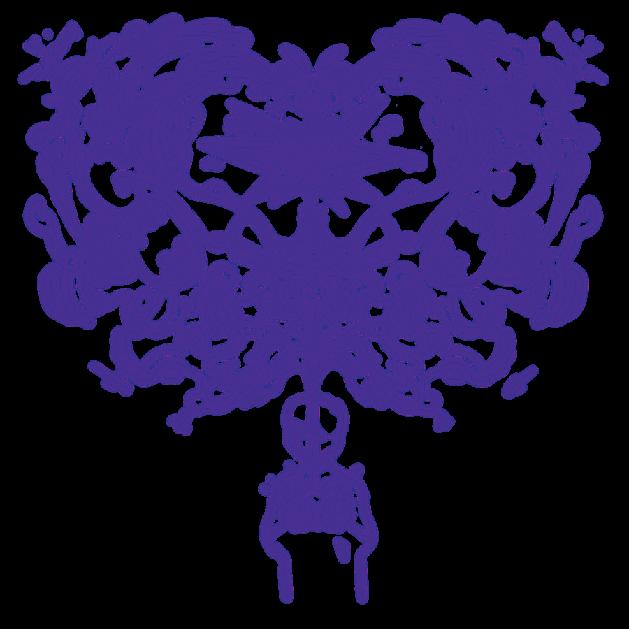
I recently took up the hobby of smoking for the second time. It’s been many years since my last cigarette and I never intended on starting again. But I fear I have caught a bad case of DAB or “Dissociative Abroad Behaviour,” where the patient does not recognize their unhealthy and dangerous choices because they feel like a different person when across a body of water. Now for the past couple of weeks a casual cigarette at a club has turned into a daily yearning that I intend to snuff out immediately. Like people, cigarettes are many things. They are kind of fun, they are terrible for you, they are like the best laxative on the market, they are a waste of time and money, they can be a great tool for socializing if you don’t know anyone at a show and they are completely unnecessary. You can make friends without asking for cigarettes.
Quitting is confusing because there are so many perspectives from which you can view cigarettes. It’s not a big deal until I realize that my left lung slightly aches when I inhale. I think it helps that the packaging has an image of rotting teeth and the word cancer written about 16 times. I feel so much better when I don’t smoke, but coming back to the pessimism, it’s kind of nice to feel like you’re doing something unhealthy. At least there’s a
weird sexiness to it, which I’m sure becomes incredibly unsexy when you ultimately face the consequences of your actions. It’s already unsexy. Can we make peace and taking care of ourselves sexy again? Has it always been? It is to me. I like having teeth and I don’t want cancer so I am stopping immediately. It was fun while it lasted. I got the cultural experience of smoking in a pub garden in London and now I think I’ll focus on the people instead. Plenty of people here actually don’t smoke. There’s no point in participating in a cultural experience at the cost of your health. It works for some people, I will never judge someone for smoking because we’re all at different stages in our cyclical becoming. Like doom-scrolling, smoking, at its best, is just something to do, and there are always way better things to do.
Anywho, that’s all for this month. I hope this is better than a summary of everything I’ve done. I would honestly rather eat glass than regurgitate my itinerary from every day.
I love you, whoever you are. Thanks for reading. If you’re in London, come say hello.
Until next time x
“Can we make peace and taking care of ourselves sexy again?”
The pros and cons of returning to formal education later in life
Francesca Gesualdi
Contributor
Kit Vega (they/them)
Illustrator
There are three pivotal moments that led me to writing this piece.
The first happened as I was leaving Environmental Ethics 310 for the last time. Having just handed in a decent final exam, I was heading for the door when the teacher pulled me slightly to the side and smiled a little nostalgically. “It’s been a pleasure having you in my class,” he said, as quietly as possible so as not to disturb the remaining exam takers. I felt myself blushing inside with a warm fuzzy feeling of pride and purpose.
To be honest, I was sure I’d been a nuisance in his class, always an opinion to share, not always on time. The validation landed with good timing, as I was beginning to wonder what the heck I was doing here at my age. Besides, I’ve already got ethics when it comes to the environment. Shouldn’t I be at the senior’s centre doing chair yoga or playing bridge?
The second time was by email. I had nominated a former teacher for the Teaching Excellence Award and thought I should let her know. She’s a busy, hardworking professional, and I did not hear back for weeks. But, when she did respond, she said my note turned a bad day into a warm smile. Then, she said that people like me make teaching a gift. Pride and purpose to the power of infinity.
“Up until now, I had only seen the disadvantages, the obstacles and challenges of being a student of semiretirement age, a mature student, returning to university.”
Moment number three. Fall of 2024, we are making signage for the plants, weeding and mulching at the Vancouver Urban Food Forest Foundation food garden at their KamloopsHastings St. location as part of our coursework. One of the students I haven’t really noticed before approaches me. I sense he is having some anxieties about the scene before him. He is 40 years younger than me, of a different culture, different sex and different skin color. He says to me, “Can we be friends? Can I send you a WhatsApp invite?” We have completed a successful class presentation together and are working on a second.
This third time though, instead of a blush of pride and purpose, there was the dawning of a realization. My age, the fact that I am in a completely different stage of life than my young friend, that I have a different set of expectations about being here, a more expansive mindset tuned by life experience, gave me a kind of competitive edge; a special value to contribute, an unexpected purpose.
Up until now, I had only seen the disadvantages, the obstacles and challenges of being a student of semi-retirement age, a mature student, returning to university. Since I was also enrolled in a research class, I suddenly got excited. Here was a topic I could conduct a study on, design research surveys, interview subjects and collect data. What fun.
Wait a minute. A simple search on some online databases revealed that some smart folks up in Dublin have already done all this interesting, time-consuming research work for me, so I can smoothly move into the implementation phase.
Research by educators at the Dublin City University resulted in the formation of the Age-Friendly University Global Network in 2012, which accredits universities that adopt their 10 age-friendly (AFU) principles. I will be discussing these 10 principles at Capilano University’s own Symposium for Teaching & Learning Excellence in April.
An article in the industry publication University World News states that, “Cultural transformation in higher education institutions is required for universities to become more flexible and thereby accommodate older people and laterlife learning.” Input from older members of communities is important in addressing questions around the role of universities in contemporary society as well as access to higher-level knowledge.
From this, “the possibilities for mutual learning, dynamic development and innovative outcomes are considerable and the contribution to the community at large is immense,” says the same paper.
The organizations and institutions that have applied themselves to valuable research in the field are impressive:

• Social Capital and Learning Regions International Observatory (Africa Hub) (PASCAL) under the auspices of the Centre for Local Economic Development, University of Johannesburg, South Africa.
• Centre for Lifelong Learning (CLL) at the University of Strathclyde, Scotland in the United Kingdom, Dublin City University, Ireland, Arizona State University, United States.
Further research published in The Conversation , an online non-profit, academic journal that makes itself available to the public without a paywall, identifies three types of barriers facing Zoomer students: situational, institutional and positional. There are even studies that researched biases and stereotypes, such as gender-ageism faced by older students.
Here in B.C., three universities—University of Fraser Valley, University of British Columbia Okanagan and Kwantlen Polytechnic University—are leading the way and have acquired the AFU designation and are working on applying the 10 principles that are the cornerstone of the designation. My brief overview of the programs currently
in effect under that banner at these three universities reveals well-meaning efforts. However, there is much room for improvement, as these programs as they are now reinforce some stereotypes and treat me as if I am still at the senior’s centre doing chair yoga, being visited by some nice university students, and not as an active student in the same classes as the rest of the school.
I believe that CapU is best positioned to take a leadership role in building an age-friendly campus that not only adopts the 10 principles, but elevates them. This is a transitional time for universities. Enrollment in the typical age group, 18–25 year olds, is significantly down. International students, once a source of important revenue, are now subject to a government-established limit. Hence, my workshop with the Centre For Teaching Excellence Symposium on Teaching and Learning on April 3, 2025 and May 1, 2025.
Hope to see you there.
“Further research published in The Conversation...identifies three types of barriers facing Zoomer students: situational, institutional and positional.”
(at least for now)
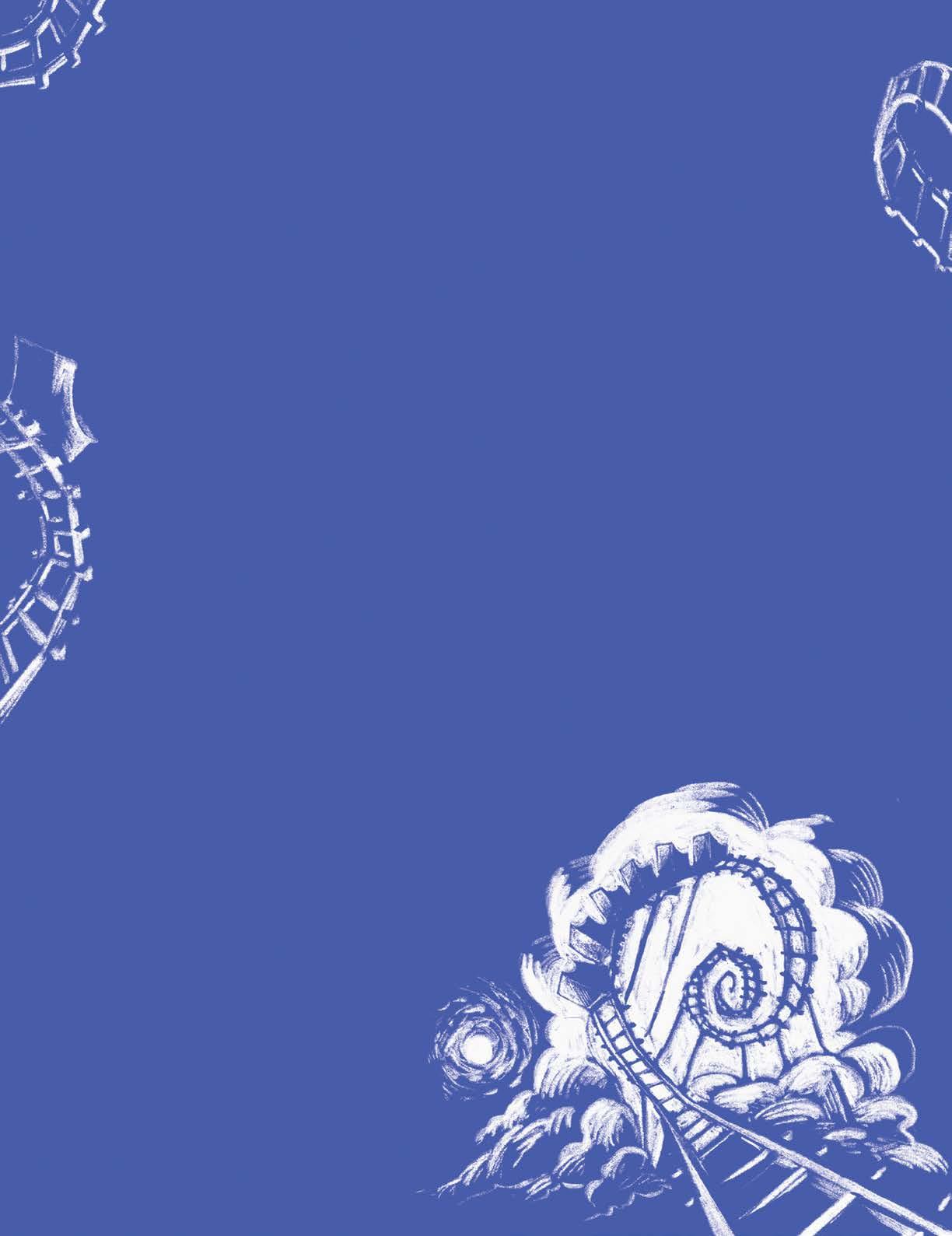
Recapping four years at CapU
Lea Krusemeyer (she/her)
Sports Editor
Andy Poystila (he/him)
Illustrator

It was the beginning of February and I was sitting at a Breka downtown. Coffee and snack ready, my best friend next to me, anxious to click the button I had eyed since my first day at Capilano University. ‘Apply to Graduate,’ had always seemed like something in a mystical far away world, not something that could be my immediate reality. We braced ourselves and clicked the button and after an incredibly underwhelming five minutes, had registered to graduate at the Spring 2025 ceremony.
Walking home that day, my last four years at CapU flashed before my inner eye. My memories of September 2021, my first semester, overshadowed by COVID-19 and Zoom classes. After having just moved to Canada, I was craving social interactions but instead, I got stuck in my shared apartment trying to listen to tired and exhausted professors who probably hated teaching on Zoom as much as I hated learning on Zoom. To be honest, my entire first year is somewhat of a blur, but I vividly remember feeling so lost. The Zoom chat boxes were my way of communicating with fellow students and it was messy and confusing; the blind really led the blind.
Emerging from that first COVID semester and the overall mess of my first year at CapU, I set out for 2022 to be my year! Spoilers: that didn’t happen either. While we were now finally in person and on campus, a new challenge arose. 8:30 a.m. classes became my most hated enemy and I folded at first sight. The amount of skipped early morning classes in my second year of school is embarrassingly high and surely cannot be counted on two hands. Coming from Germany, I also had this very specific image of North American universities in mind and CapU satisfied none of my imagined scenarios. No campus culture, crappy food, overpriced everything and my one-hour commute to campus didn’t help the overall feeling of, “What the hell am I even doing here?” that had crept into my mind.
So, logically, I had little expectations for my third year at CapU. But, just as they say when it comes to love—it finds you when you stop looking—CapU began to excite me. I had finally made it out of the trenches of 100 and

200-level classes and into the interesting stuff! I knew my way around campus, I began working for the Courier and— most importantly—I managed to find a handful of really great friends in my program. That’s when my long-lost need for academic validation was resurrected and I spent tiring and exhausting hours at the local library grinding out assignments like there was no tomorrow. My GPA, which had suffered due to my hate for 8:30 a.m. classes, was in desperate need of raising and I made it my mission to do so. A few minor hiccups along the way, like taking a class twice by accident, only made my already expensive degree even more outrageously pricey, but, hey, at least I was finally getting the As my ego was so desperately craving.
After setting myself up for success in year three, my fourth year at CapU began with academic anxiety and an overall feeling of, “Am I smart enough for this?” Through no one’s fault but my own, I had chosen classes that were challenging to a point I could barely handle—it didn’t help that I liked my prof so much that I desperately wanted to impress her—so, after having just escaped the trenches, I re-entered. Putting so much pressure on myself that I eventually ended up in therapy, but, hey, at least I managed to get my straight As. CapU was no help in all of this, inaccessible resources and a (most probably) underfunded Communication program only accelerated my already existing anxiety.
So, now about a month away from finishing classes for good, I walked home from Breka and came to the conclusion that even though my time here at Capilano University was a huge mess, I am who I am today because of it. Developing this academic anxiety forced me to reevaluate my priorities in life, and having close to no help from CapU forced me to become incredibly self-sufficient. Two skills that I now know to be invaluable. I started my journey through the trenches of CapU when I was 21 years old, and I often wonder how the people who come straight from high school do it. This recap of my journey through CapU hopefully makes some of you feel less alone in being lost and shows you that it really all is about not giving up. Shout out to all of you who keep grinding out assignments with the hope of one day clicking the “Apply to Graduate” button on myCapU.
calendar to plan the rest of my year, as it only just started
During Basant (spring), the Nanakshahi calendar leads us from Chet —the start of the year in March—to Vaisakh Vaisakhi, which happens midway through the month of April, marks the harvest in Punjab and the anniversary of the creation of Khalsa
Khalsa . I didn’t understand this word growing up. Why didn’t we just say Vaisakhi marks the creation of Sikhi?
Upon growing up, I’ve come to realize that Sikhi didn’t start in 1699 AD when Khalsa did. Sikhi has been around forever because love and peace have been around forever.
Our first guru, Guru Nanak Dev Ji, was born in 1469 AD. Although he didn’t formalize the religion through the creation of Khalsa, he pioneered it. To say that Sikhi started after him wouldn’t make sense.
Vaisakhi means the parade, which is where tens of thousands of Sikhs will gather to celebrate. Capitalism will also be present, with vendors who do not care for our culture showing up to leech off our community. Politicians will come, too, looking for South Asian
endorsement. The police will also be there, wielding assault rifles on every corner.
The Canadian Armed Forces will ride through the parade on a float as well, present at a celebration of a pacifist religion, which I rebuke. Some may disagree with this sentiment. I invite them to revisit the scripture.
Everything is up for interpretation, anyway.
My sister asked me to go on vacation with her in Jeth (June). The last vacation I went on was to Ontario, which started as a Courier working trip and ended at my nanke (maternal family) after our flights were cancelled due to a crash at Toronto-Pearson Airport. For four days straight, all I drank was cha (what most people refer to as “chai,” for the Hindi name has been standardized in English, rather than the Punjabi name) and my nani (grandma) made aloo paratha (potato-stuffed flatbread) every day.
I want to go back this summer, but I’ve committed to a vacation with my sister.

Monsoon season comes during the months of Sawan and Bhadon . This is according to Punjab’s seasons. Over here, it will mostly still be sunny and I will be at the beach.
During Sawan is Rakhri. I didn’t know what to call this day growing up, because my Hindu friends called it Raksha Bandhan. I think it’s Rakhri in Punjabi. Regardless, I have so many brothers to bless and be blessed in return. ਪਤਝੜ
I may be biased as an October baby, but autumn is my favourite season.
Around the start of the month of Kattak , I turn 22 this year. Turning 20 felt like a milestone. Two decades! Turning 21 felt odd. The realization that the number just keeps going… Is it long or is it short? Try counting to 100.
I interviewed my parents on my 21st birthday.
Me: So, how does it feel knowing that I’m ageing and I’m only going to get older and older until I die?
Ma: Let’s not talk about that.
Me: What about you, Daddy?
Ma: ਤੇਰੇ
Me: Don’t turn this–this isn’t about you, it’s my birthday, actually. And I asked Daddy. Daddy, how does it make you feel?
Dad: I don’t know…
On Gregorian New Years’ I slept early and went to the gurdwara in the morning. When I got home, I packed my car and headed to a beach for a cold plunge. The water was nice, and none of my friends believed me. ਸਿਆਲ
Siaal occurring from Magh (mid-January) to Phagan (mid-March) has started to feel accurate over here, too, these last few years. The snowfall usually only comes in February.
I guess I don’t know where I’ll be a year from now, but I’ll have more words to describe it.

As I’m sure everyone and their mother is aware, 2025 is the year for the housing market. Whether you’re looking to rent, lease or buy, the market flourished into a thriving enterprise (for landlords) in recent years, due to a near-total lack of market regulation from the government. The best part? Tenants are just dying to live in Vancouver!
As some people like to say, there are two types of freedom: freedom to and freedom from. Freedom from is a coward’s concept, suggesting that with ample government oversight, we can have basic human rights like affordable housing and health care. Basically, the freedom to live without having to worry about homelessness, starvation and all that dramatic stuff. Obviously, this so-called ‘freedom from’ is Stalinism. Who the heck wants to limit free trade?
Not Canadian realtors, that’s for sure. That’s why, in the glorious 2025 housing market, we have free reign to do whatever the heck we want to exploit legal loopholes and maximize individual profit while minimizing public utility! If you’re sick of making bank within the confines of laws and find yourself interested in learning some ethically ambiguous and moderately legal methods to profit on the Canadian housing market, then read on, my ambitious little investor.
1. “Renovictions” as an art form: this is a personal favourite of many successful realtors across the nation, especially in densely populated metropolitan areas like Vancouver. The first step is to find an old property, preferably with a pre-established renter base. Once your purchase is made, file a claim stating that your purchase is absolute trash. BUT—and the but is very important—it has earning potential.
All that’s needed to ensure profitability is a couple hundred thousand to a couple million bucks worth of your trust fund—I mean, uh, hard-earned cash— to renovate the entire property. To ensure a timely delivery of your project vision and keep your construction company efficient, you’ll need to evict all of your tenants first, after which you can slap some cheap paint over unsanded walls, and relist the apartments for rent at triple the price, or even five times the price. The sky’s the limit here!
2. Short term rentals are your bestie: the problem with long-term tenants is that they have rights, and that’s too complicated to deal with when your main priority is profit. Long-term tenants expect (or rather demand) ridiculous and unfounded perks like rent control or habitable conditions. This requires regular investment in renovations, and foregoing any chance at hiking rent. How are you supposed to indefinitely increase your earnings if you’re busy being mommy for some schmucks demanding livable conditions and lounging around like royalty? You’re tryna make a living, after all! The solution? List your properties on Airbnb and pretend it’s “only for the summer” while the cash piles up year-round.
3. Rebrand necessities as charged luxuries: Look, we know that tenants already pay for conveniences like hot water, but we don’t need to tell them that. Credit card or PayPal-operated hot water services are an excellent way to redirect electric payments from corporations such as BC Hydro and redistribute the wealth to humble business owners such as yourself. Going further, who said that clean air and ventilation should be guaranteed in your rental contract? Ensure that each apartment’s ventilation systems completely malfunction unless bi-daily payments are made via direct deposit.
4. Leases are leninist degenerates: housing security through legal documentation is for the weak. As a landlord, your goal is to maximize profit as much as possible and as frequently as possible. Hail to our deity: the dollar! Humanity takes the back seat at this point. It might be most convenient to abandon your humanity, your empathy and your ethics entirely and shorten your eviction notices as much as possible while simultaneously jacking up the rent every month.
Finally, my dear entrepreneurs, I leave you with some fruit for thought. With just a tad of ingenuity and repressed concern for morality, you are left with an incredible opportunity to thrive in the housing market. Humanity is for suckers, be rich instead.


Huwo, todaye i wil be riting da best list about best and most awsomest and scawwwiest animmals hat i have seen. Be carful reeding dis beacauz yu mite get scawed that you en up peeing in youw patns.
Sean Finan (any)
Crew Writer

Illustrator Neeka Yazdani (she/they)

“my unkel won time he sad he saws a amadiwo in wen he wived in taxas”
Numba one Snak.
Da snak is so scarry beacauz yu dont know how manny teef it has an it move awound so slimey an weerd. Iniana jons is scarred of them to.
Numba too Amadiwo.
a ahmadiwo is so scawy beaucauz it kan woll up like a bawl and yu don no wat it wil be dong necks. my unkel won time he sad he saws a amadiwo in wen he wived in taxas he sayd thay hawve amadiwos on all the twees.
Numba twee SPIDER
Da spider is pobably won uv my leest favoit bug beecuz it haz so amny weerd legs and crawls arownd all scary and weerd. Sumtimez dey ar awe wunning arownd and weyig eggs.
Numba fwow Travis scot Fowtnite.

Dis animel is so weerd an cwazy and he do weewy weerd fownite danzes. Sumtimez wen im praying fownite i se him and i pee in my pantzs.
Yallow butt sooo beg an tall he– Adam enters the room.
A: Yo Sean, what are you doing?
S: Adam! Hey! No-nothing. I’m just working the article!
Adam trudges toward my computer.
A: Top 10 most awesomest and scawwiest amnimals? What are you, five years old?
S: But, I-I thought- I thought… wasn’t this your idea?
A: Like hell it was. My dork son probably took my phone and typed that shit into the google sheets.
S: You have a kid?
A: Yeah, and lemme tell ya, never have kids Sean. You think ‘oh but I have so much love to give, oh me and my wife love eachother!’ But next thing you know, you’re 40, your hair’s receding, your wife takes half your vintage guitar pedals, and all your kid calls you is “tubso” because you can’t stop eating to fill the void.
S: Damn… uh, should I finish this article?
A: I don’t know. Do whatever you want.
Adam lights a cigarette and takes out his cellphone, answering a phone call.
A: Cello? …. Well can I see him today? …. It’s Friday, it’s my turn to pick him up from-... That was only one time! I didn’t mean to– … I don’t give a shit what Derek says, he’s not the boy’s father.. .. Bianca? Bianca?? Fuck.
He drops his head down, realizing he was hung up on.
A: Fuck. Fuck this… Sean, just, figure this shit out, I gotta deal with this.
Adam exits the Courier Office.
Da hammahed shark is beg an wit his teef all beg and powntee he head is hammer shape like dads job at da work he can cwash watevver da hammahed shark wans to be eaten an it wit da oshun a shark widderly is king of awl of da oshun.


Here are some more articles to expect published on our website, capilanocourier.com:
Illustration by Andy Poystila for the Literature section
• CapU’s Security Breach
• Divided Opinions on AI Among Teaching and Non-Teaching Faculty Members CapU’s Mental Health Resources
• Strength in Unity: The 2025 Invictus Games
• A voicemail (Literature)
• Silver She and Me (Literature)
• A Love Letter (Literature)
• Fun Things to Do on 4/20
• Marry an International Student
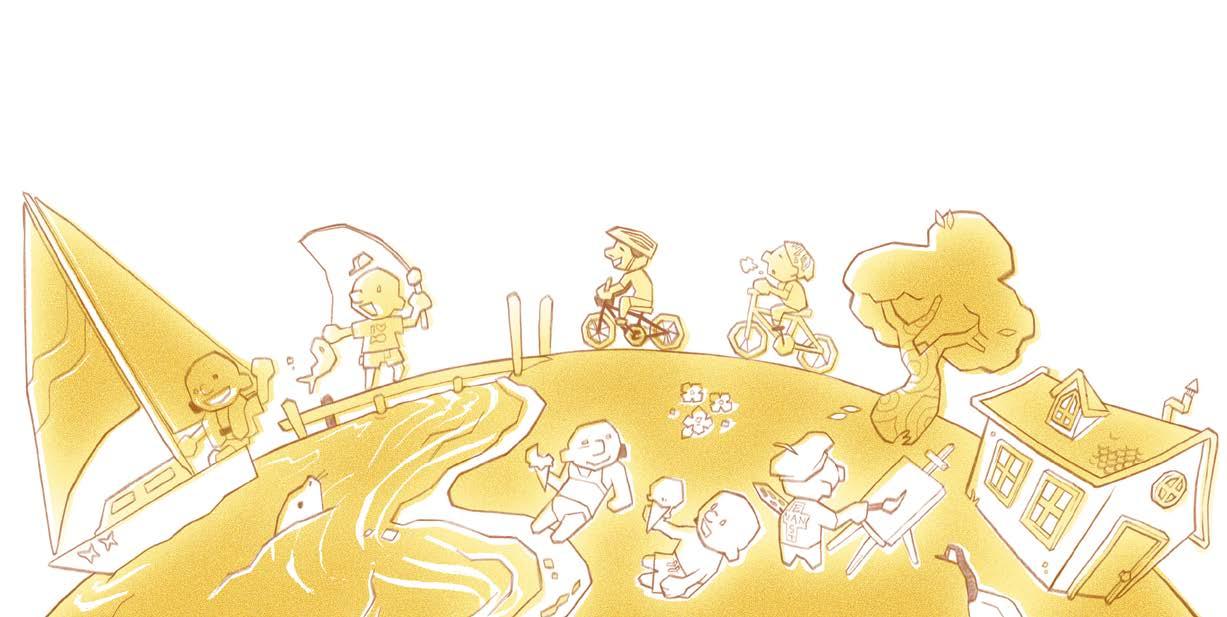

This is it.